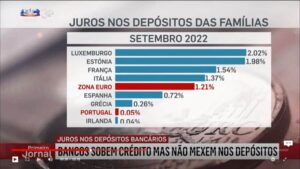GBP: Dancing to Brexit’s tune
Sterling had a losing week, down by an average of 0.4% to the other major currencies. It could have been worse. Investors took an intense dislike to the pound on Monday and continued to punish it the following day. Their particular concern was the escalating war of words between the two contenders to replace Theresa May as prime minister. It was not just their promises to abandon the idea of a balanced budget, with higher spending and lower taxes, but also their readiness – even eagerness – to push through the hardest of hard Brexits.
Investors changed their minds on Thursday when Parliament approved an amendment designed to prevent the prime minister sending them home in order to force through a no-deal. It also helped that retail sales jumped 1% in June, contrary to a British Retail Consortium survey that showed sales fell in the year to June at the fastest pace on record for that month.
EUR: German investor confidence fades
There were few high-profile economic statistics from Euroland and the euro is unchanged against sterling and the US dollar. Theoretically the most important data were Wednesday’s inflation numbers but they were close to forecast, with headline inflation edging up to 1.3%. They contained nothing to dissuade the European Central Bank from embarking on another round of monetary stimulus. At a practical level investors were more interested in ZEW’s survey or German investor confidence. The two measures of current situation and economic sentiment were both lower than forecast, with the current situation assessment plunging nine points to -1.1.
On Wednesday, the EU did what it does best, finding a compromise that no member state much likes but to which none takes violent exception. The compromise this week was Parliament’s confirmation of a new president for the European Commission. German defence minister Ursula von der Leyen got the job, with a narrow majority of 383-327. She will take up her new post on November 1.
USD: A rate cut this month but how big?
Mixed fortunes for the dollar saw it at the front of the field on Tuesday and at the rear on Thursday. Eventually it was unchanged against the euro and the pound.
On balance the US data were modestly positive for the dollar, with the emphasis on “modestly”. The New York Fed’s manufacturing survey for July reported a modest rebound in activity. Retail sales increased by 0.4% for a second month. Industrial production was flat. The Fed’s Beige Book reported a modest pace of expansion.
It was interest rate expectations that did most of the heavy lifting – or dropping – for the dollar. There were eight speeches by senior Federal Reserve officials. New York Fed president John Williams had the greatest impact. Speaking of lower rates he said “It’s better to take preventative measures than to wait for disaster to unfold”. Investors took it as notice of a 50-basis-point cut this month. Unusually, the bank later issued a “clarification” saying that this was not what he meant.
CAD: Inflation on target at 2.0%
The Canadian dollar was just about unchanged against the pound and US dollar. Canadian economic data were not stunning but they were respectable enough to counteract a 7% fall in the price of oil.
Foreign investors acquired $10.2 billion of Canadian securities in May, following two months of divestment. At the same time, Canadian investment in foreign securities resumed to reach $4.1 billion, led by purchases of US corporate bonds. As a result, international transactions in securities generated a net inflow of funds of $6.1 billion in the Canadian economy in May to total $34.2 billion in the first five months of 2019. The consumer price index figures contained nothing to encourage a rate cut by the Bank of Canada. Even though core inflation at 2.0% was lower than analysts had predicted, the headline reading, also 2%, was in line with forecasts. It was the same story for manufacturing shipments: The 1.6% monthly increase was less than the forecast 2.0% rise but it was a marked improvement on the previous month’s 0.4% decline.
AUD: Better jobs not more jobs
The antipodean dollars were the two top performers among the major currencies. The Aussie only managed second place but that was still enough to take it 1% higher – nearly two cents – against sterling and the US dollar. It was the expectation of lower US interest rates that did most of the work. At 1.0%, the Reserve Bank of Australia’s Cash Rate is appreciably lower than the Federal Reserve’s 2.25-2.5% target for the Funds rate but the gap is likely to narrow, perhaps quickly.
Economic data from Australia also helped. Thursday’s jobs numbers showed unemployment remaining steady at 5.2%, with the participation rate also unchanged at 66%. Only 500 new jobs were created in June, however there was a big 21k swing from part-time to full-time working. For that reason, investors saw the figures as a plus for the Aussie.
NZD: Inflation reduces rate cut risk
The Kiwi was the top-performing major currency, strengthening by 1.4% – more than two and a half cents – against sterling and the US dollar. Both the NZ and Australian dollars benefited from a belief that the US Federal Reserve will cut its Funds Rate this month, and a suspicion that the cut might be as big as half a percentage point. That would still leave the Fed’s benchmark higher than the Reserve Bank of New Zealand’s 1.75% official Cash Rate, but the gap could narrow quickly.
Tuesday’s NZ consumer price index data helped consolidate that view. They showed inflation accelerating from 1.5% to 1.7% in the first quarter. The numbers were in line with forecast, which dampened some of their impact, but they were also seen as providing no immediate excuse for the RBNZ to follow Australian interest rates lower. Other NZ data put visitor arrivals in May 1.2% below the same month last year, milk prices 2.7% higher on the fortnight and credit card spending 6.6% higher on the year.
For corporate partnerships enquiries, please call: +44 (0) 203 823 0526 or email: corporatepartnerships@moneycorp.com
For personal partnerships enquiries, please call: +44 (0) 207 828 7000 or email: partners@moneycorp.com
To find out more about suitable solutions, please call us on: +44 (0) 207 823 7400, email: partners@moneycorp.comor, visit our website here
moneycorp is a trading name of TTT Moneycorp Limited which is authorised by the Financial Conduct Authority under the Payment Service Regulations 2017 (reference number 308919) for the provision of payment services.
For competitive exchange rates, low transfer fees, expert guidance and the special offer of your FIRST TRANSFER FREE call moneycorp on +44 (0) 207 823 7400 or visit www.moneycorp.com/portugal-resident


























